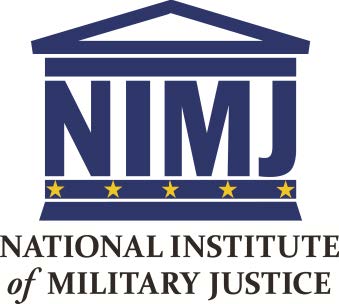|
"Did You Serve on a War Crimes Jury at Guantánamo Bay? We Want to Know.The Times is looking for officers who were selected to serve on military commissions panels at Camp Justice to discuss the experience, within guidelines set by the court."
https://www.nytimes.com/2024/07/02/us/politics/did-you-serve-on-a-war-crimes-jury-at-guantanamo-bay-we-want-to-know.html?smid=nytcore-ios-share&referringSource=articleShare&sgrp=c-cb
0 Comments
Background reading.
Anonymous participation optional--see instructions here. *** Topic: CAAFlog Pop-up: Gen Stewart’s Acquittal Time: Jul 1, 2024 12:30 PM Eastern Time (US and Canada) Join Zoom Meeting https://villanova.zoom.us/j/7841656237?omn=99036743966 Meeting ID: 784 165 6237 --- One tap mobile +16469313860,,7841656237# US +13017158592,,7841656237# US (Washington DC) --- Dial by your location • +1 646 931 3860 US • +1 301 715 8592 US (Washington DC) • +1 305 224 1968 US • +1 309 205 3325 US • +1 312 626 6799 US (Chicago) • +1 646 558 8656 US (New York) • +1 360 209 5623 US • +1 386 347 5053 US • +1 507 473 4847 US • +1 564 217 2000 US • +1 669 444 9171 US • +1 669 900 6833 US (San Jose) • +1 689 278 1000 US • +1 719 359 4580 US • +1 253 205 0468 US • +1 253 215 8782 US (Tacoma) • +1 346 248 7799 US (Houston) Meeting ID: 784 165 6237 Find your local number: https://villanova.zoom.us/u/adeQm3C2vS Is the military a "no means no" or a "yes means yes" jurisdiction? Is the absence of consent proved by expressed non-consent, or by the absence of affirmative consent?
Update: https://www.tpr.org/military-veterans-issues/2024-06-29/jury-of-generals-finds-two-star-air-force-general-not-guilty-of-sex-assault-in-historic-court-martial $60K fine, two months restriction, and a fine. Maj. Gen. Phillip Stewart has been acquitted by a panel of members.
Lindsay Lyon Rodman, Doing Away With the Military Deference Doctrine: Applying Lessons From Civil-Military Relations Theory to the Supreme Court. 99 N.D. L. Rev. 327 (2024).
United States v. IronhawkAn Article 62 appeal challenging the military judge's exclusion of Mil. R. Evid. 404(b) evidence: a ruling that proffered statements were not res gestae, that a statement that the accused would "kick her husband's b***" is not indicative of an intent to murder, and talking about divorce isn't even a crime, wrong, or character act for Mil. R. Evid. 404(b). United States v. K. DavisAnother Article 62 appeal which ACCA grants in a 22 page decision.
It is not us. Weebly has cut ties to Scribd, and weird code appears in the Weebly editor and published items. Sorry. Weebly will now only let us post documents in .pdf and, apparently, Word. As to the coding, we'll see what can be done to root out the Tribbles.
Your browser does not support viewing this document. Click here to download the document. |
Disclaimer: Posts are the authors' personal opinions and do not reflect the position of any organization or government agency.
Co-editors:
Phil Cave Brenner Fissell Links
SCOTUS CAAF -Daily Journal -2024 Ops ACCA AFCCA CGCCA NMCCA JRAP JRTP UCMJ Amendments to UCMJ Since 1950 (2024 ed.) Amendments to RCM Since 1984 (2024 ed.) Amendments to MRE Since 1984 (2024 ed.) MCM 2024 MCM 2023 MCM 2019 MCM 2016 MCM 2012 MCM 1995 UMCJ History Global Reform Army Lawyer JAG Reporter Army Crim. L. Deskbook J. App. Prac. & Pro. CAAFlog 1.0 CAAFlog 2.0 Archives
July 2024
Categories
All
|



 RSS Feed
RSS Feed